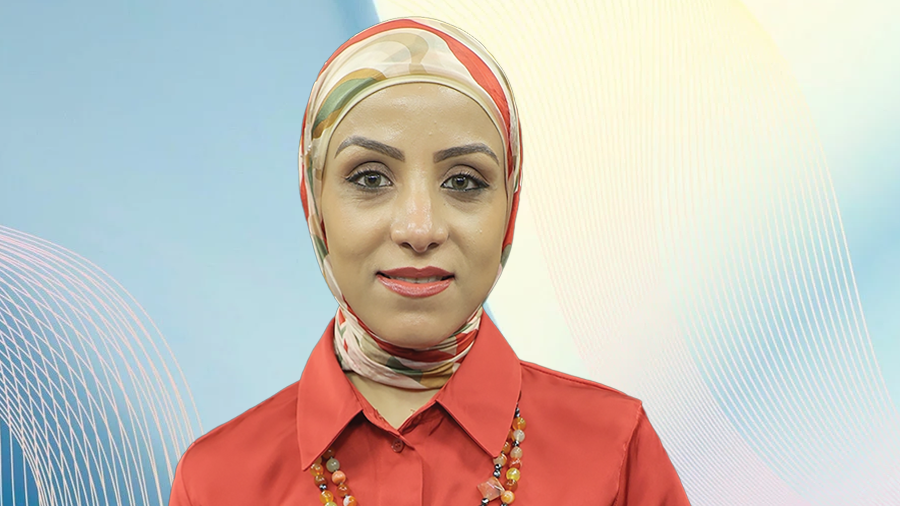
Prof. (Dr.) Hebatallah Adam
Professor of Economics, Associate Dean for Doctoral Studies at Jindal School of International Affairs, Founder and Director of Jindal Centre for the Global South, O.P. Jindal Global University
Diplomatist spoke with Prof. (Dr.) Hebatallah Adam, on how countries like Egypt can recalibrate their trade, industrial, and financial strategies amid today’s shifting global architectures. In this wide-ranging conversation, she highlights how South–South cooperation, green industrial policy, and diaspora linkages can be leveraged to transform geography into genuine competitiveness. She underscores the importance of institutional reforms, transparent governance, and digital trade facilitation in positioning Egypt—and other Global South economies—as reliable and strategic supply-chain hubs rather than mere transit corridors.
1. You have written extensively about the shifting architectures of South–South cooperation. Given recent Belt-and-Block realignments, how should countries like Egypt recalibrate their trade and diplomatic strategies to avoid being a transactional partner and instead become a strategic node in emergent Global South supply-chains?
The Belt-and-Block realignments extend beyond great-power rivalry; they present an opportunity for countries such as Egypt to establish themselves as vital hubs within Global South supply networks, rather than merely as transit routes.
The critical challenge is to transform geography into competencies. For Egypt, this entails three priorities:
Primarily, predictability represents our most significant competitive edge. By ensuring transparency and enforceability in customs, digital single windows, and laws, we mitigate risk premiums and build trust in global buyers who choose Egypt as a reliable sourcing hub.
The paradigm shift is evident: transitioning from selling access to selling capabilities – verified suppliers, reliable logistics, sustainable energy, and consistent regulations. This will transform Egypt from a transactional partner into a strategic supply-chain hub.
2. The UAE has rapidly pivoted into a regional hub for finance, logistics and renewable investment. From an economic-policy standpoint, what institutional reforms should Egypt adopt, beyond physical infrastructure, to convert transit geography into durable industrial competitiveness rather than a mere conduit for re-exports?
Egypt’s geography presents a significant advantage; nevertheless, to convert this into enduring competitiveness, it is essential to augment physical infrastructure with institutional reforms that enhance investor confidence and local capacity.
I would emphasise three priorities:
Collectively, these reforms establish the conducive environment in which transit evolves into transformation—geography remains the basis, while credible institutions and reliable regulations are what convert containers into factories and supply networks into sustainable competitiveness.
3. Green economics is a recurring theme in your work. With the Gulf states committing to net-zero timetables and Egypt hosting major renewables projects, how can middle-income Global South states design green industrial policies that simultaneously attract Gulf capital while safeguarding local value-addition and jobs?
We must consider green projects as industrial activities rather than only energy projects. If Gulf funding is invested in financing electrons or hydrogen molecules, middle-income countries like Egypt should ensure that these agreements also facilitate component manufacture, skill development, and supplier connections. Integrate climate finance with industrial policy.
Three priorities are prominent:
The overarching concept is clear: Gulf States contribute finance and scale, while host states must offer credibility and capabilities. Transparent contracts, enforced milestones, and supplier development programs enable green financing to support not only clean energy but also high-value industries and sustainable employment.
4. Development finance is morphing; private capital, sovereign wealth, and climate funds now sit alongside concessional lending. For countries in MENA and Africa, what governance frameworks would you prioritise to ensure these new capital flows do not erode fiscal sovereignty or create hidden contingent liabilities?
I contend that we should embrace the new capital inflows while overseeing them with transparency and rigour. Private, sovereign, and climate funds can expedite development; nevertheless, to safeguard fiscal sovereignty, every agreement must be reviewed, valued, and reported prior to implementation.
I would emphasise three governance priorities:
Should I select one change, it would be the mandatory legal requirement for pre-signature fiscal-risk evaluations to be publicly accessible for all significant transactions. This straightforward measure mitigates concealed threats at minimal administrative expense.
The overarching idea is evident: see each dollar of fresh financing as contingent — prioritise transparency, followed by stress-tested commitments, with signatures as the final step. This approach enables MENA and African countries to attract substantial investments while maintaining fiscal resiliency.
5. Migration and diaspora linkages are powerful levers for development. Drawing on Egypt’s diasporic networks and the UAE’s migrant labour model, what policy mix best converts remittances, skills transfers and diaspora investment into sustained productive capacity back home?
We must consider remittances, diaspora funds, and migrant talents as enduring capital rather than mere seasonal income streams. If properly administered, they can fund factories, small and medium-sized enterprises, and skill enhancement – rather than only consumption.
I would emphasise three priorities:
When finance, investment, and skills collaborate effectively, diaspora linkages serve as a genuine catalyst for development: creating employment opportunities, enhancing value-added output, and fortifying Egypt’s integration into regional and global markets.
6. Digitalisation of trade (e-customs, e-invoicing, trade facilitation) is touted as a low-cost route to competitiveness. Where should Egypt and similar economies invest first, regulatory reform, digital infrastructure, or human capital, to meaningfully lower trade costs and attract GCC supply-chain relocation?
We have to start with the regulations, thereafter develop the processes, and consistently invest in individuals. To clarify, prioritise regulatory reform initially, followed by digital infrastructure, with an emphasis on human capital consistently.
To attract GCC supply chain transfer, predictability is essential: service-level assurances about clearance durations, expedited lanes for trusted traders, mutual acknowledgement of electronic papers across borders, and explicit data protection regulations.
My foremost immediate objective would be to legally recognise digital trade documents and establish binding single-window clearing times. This combination immediately diminishes uncertainty, decreases risk premiums, and conveys to international purchasers that Egypt is a reliable trade partner.
Leave a Reply